Feline Hyperthyroidism
Hyperthyroidism is an important illness for carers to be aware of since it affects about 10% of cats over the age of 10 years. Hyperthyroidism is an illness which typically develops quite slowly (gradually getting worse) which can make it hard for a carer to spot. Routine health checks are especially important in older cats to try and help detect illnesses such as hyperthyroidism at the earliest possible stage.
Fortunately, once diagnosed, there are several very effective treatment options for this condition.
What is hyperthyroidism?
All cats have two thyroid glands, one on each side of their neck, usually just below the voice box. The thyroid glands produce two hormones tri-iodothyronine (T3) and thyroxine (T4). Each thyroid hormone contains a protein and some iodine (in the form of iodide): T3 has three iodide molecules whereas T4 has four. Thyroid hormones act on all of the cells of the body and are especially important in controlling the cat’s metabolism.
Cats suffer from hyperthyroidism if their thyroid gland is producing too much thyroid hormones. Hyperthyroidism is usually caused by benign overgrowth of the thyroid gland/s (adenoma or adenomatous hyperplasia, approx. 98% cases) but very occasionally can result from a thyroid cancer (adenocarcinoma, < 2% cases).

Ginger before treatment of his hyperthyroidism. Ginger’s owners had spotted that he had lost weight, was drinking more and that his coat was in poor condition. All of these are common clues of hyperthyroidism
How can carers spot if their cat has hyperthyroidism?
Commonly reported signs of this illness include:
- Weight loss: often in spite of a normal or even increased appetite
- Vomiting and/or diarrhoea
- Increased thirst and amount of urine produced: a carer may spot that litter boxes need emptying more frequently due to an increase in the volume of urine produced
- Behavioural changes: including being more irritable/restless/clingy, vocalising more (especially at night)
- Coat changes, becoming dull and in poor condition
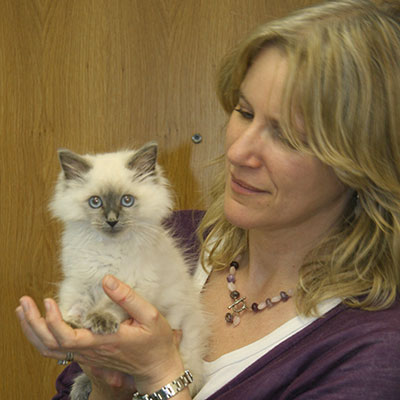
Sarah’s Top Tips for helping to diagnose your cat with hyperthyroidism as early as possible
(aimed at owners of cats aged 7 years and over since hyperthyroidism is most common in older cats)
- Attend routine health checks with your cat so that subtle signs of ill health such as weight loss can be detected as early as possible.
- Report any changes in your cat’s health or behaviour to your vet clinic as early as possible. The checklist below can be used as a guide.
- If possible, bring in a urine sample for your vet to test (you can learn how to collect a urine sample at home by clicking here). Many cats with hyperthyroidism have a reduction in their urine concentration (urine specific gravity, USG).
- Annual blood tests are helpful to spot signs of common illnesses affecting older cats, including hyperthyroidism. The charity International Cat Care recommends that annual blood tests are done in all cats aged 7 years and over and that a test for hyperthyroidism (total T4 test) is included for all cats aged 11 years and over (where possible). General blood profiles can reveal some clues of hyperthyroidism (most cats will have an increase in their liver enzymes for example) but a total T4 test is needed to confirm the diagnosis.
- … thirst?
- … appetite?
- … eating?
- … breath?
- … weight?
- … behaviour?
- … mobility or agility?
- … energy levels?
- … urination or defecation?
- … grooming?
- … coat condition?
- … breathing?
- … body condition?
- … eyes, ears and nose?
- … claws?
- … anything else?
What treatments are available for a Hyperthyroid cat at my veterinary practice?
Most cats diagnosed with hyperthyroidism can be managed very successfully and in some cases it is possible to cure the condition permanently. The ‘best’ treatment depends on each individual cat and owner situation. All treatments have benefits and disadvantages, which is why it is important that carers discuss management of their cat’s hyperthyroidism in detail with the veterinary clinic.
Management options include:
- Reversible options (need to be given for the rest of the cat’s life or until a curative treatment is available)
- Iodine restricted food (Hill’s y/d): the very low iodine content of this food prevents the thyroid gland from being able to over-produce thyroid hormones
- Medications which block the production of thyroid hormones
- Potentially curative options
- Surgical removal of the abnormal thyroid tissue by a procedure called a thyroidectomy
- Treatment with radioactive iodine (radioiodine) which locally irradiates the abnormal thyroid tissue
Resources available on the Vet Professionals website
Free Downloads relevant to pet owners:
Free video tutorials for owners
Free downloads relevant to veterinary professionals
Free video tutorials relevant to veterinary professionals
Books on Hyperthyroidism
Caring for a cat with hyperthyroidism (available print or ebook)
An 88 page fully illustrated book aimed at cat owners and veterinary professionals. The second edition contains more information on testing for hyperthyroidism, subclinical hyperthyroidism (what this is and how to diagnose it), the importance of hypothyroidism and how to avoid it and a new section on management of hyperthyroidism using an iodine-restricted food.
Pet Owners Webinar Available
Maintaining health in the older cat (pet owners' webinar)
- Thanks to advances in healthcare, many cats are now living to a greater age. This 40 minute webinar explains the normal ageing changes that occur as our cats grow older and how carers can help their cats to live as long and healthy a life as possible.
Vets/Nurses Webinar Available
Gold standard care of elderly cats (for veterinary professionals)
- Elderly cats are increasing in number thanks to better diets and healthcare. Subclinical illness is common and often passes unnoticed by carers. Preventive healthcare screening is essential to ensure that a diagnosis is made as promptly as possible with ‘Senior cat clinics’ playing an important role in this.
Consultations with Dr Sarah Caney are available to purchase and are aimed at carers wishing to discuss their cat’s care in more detail. A consultation includes an initial one-hour telephone consultation with Dr Sarah Caney; production of a detailed report for owners and their vet; a follow-up phone consultation and email support for one month following the initial consultation.
Telephone referrals may be covered by Pet Insurance - owners are recommended to contact their insurers first, as appropriate.
Sarah's Hyperthyroid Case Report

Before treatment, Anna was painfully thin and very anxious.
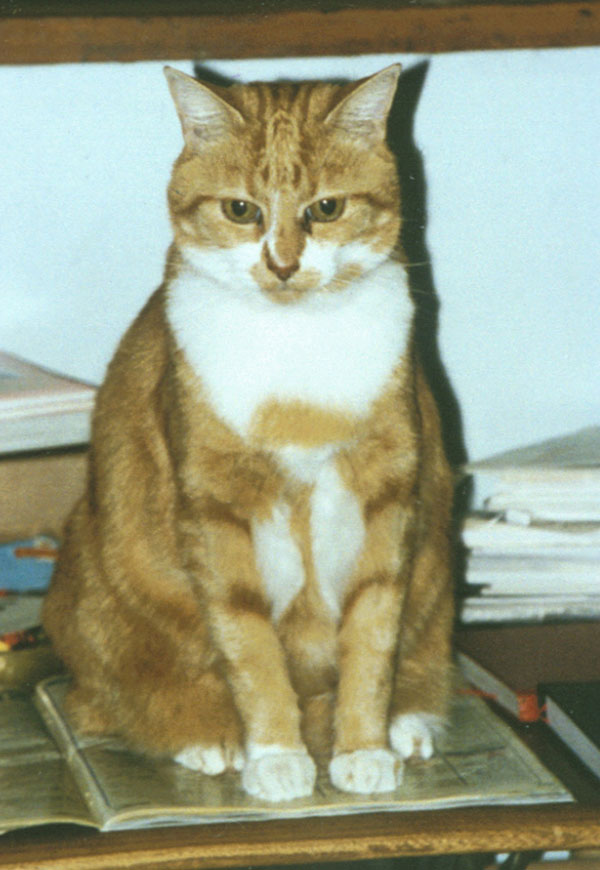
Anna a few months after treatment with radioiodine. She looks very contented and is now a healthy weight.
Anna was referred with a typical history of hyperthyroidism – she had lost weight, had intermittent diarrhoea, was very hyperactive and irritable and had an insatiable appetite. She was eating several tins of catfood every day and still losing weight. Her poor owner had taken to sleeping downstairs so that she could feed Anna more frequently during the night!
Anna’s hyperthyroidism was very advanced and this made her almost impossible to examine – she was very feisty! Her hyperthyroidism had caused a large goitre, a very rapid heart rate, she was very thin and her levels of tT4 were extremely high (190 nmol/l when the reference range is 20 – 45 nmol/l). She had slightly increased levels of liver enzymes but the remainder of her blood and urine tests were fine. Anna had an enlarged heart as a result of her hyperthyroidism but she was not suffering from congestive heart failure. I recommended radioiodine treatment for Anna – she had been a difficult cat to give antithyroid medications to, iodine-restricted foods for management of hyperthyroidism were not available and her owner was keen for her to have the best treatment possible. She had a single subcutaneous (under the skin) injection of iodine and stayed in our hospital for a few weeks whilst she was considered ‘radioactive’. At the end of her hospitalisation period, we checked Anna’s tT4 levels and found that her condition had been cured (her tT4 levels were now 23 nmol/l, within the reference range). She’d also gained a healthy amount of weight and was looking much happier.
Anna’s owner sent me several pictures of Anna, before and after her treatment. In the pre-treatment picture you can appreciate how thin and anxious she looks. Just a few months later, after her radioiodine treatment, she looks a completely different cat. Not only has she gained weight, but she also has a very relaxed expression. Her owner reported that Anna was ‘really very healthy and content’ and she was delighted that she had improved so much. Anna continued to do very well and is a great example of how well this treatment can work.
We hope you found this information helpful. Don't miss our next blog on Osteoarthritis in cats.
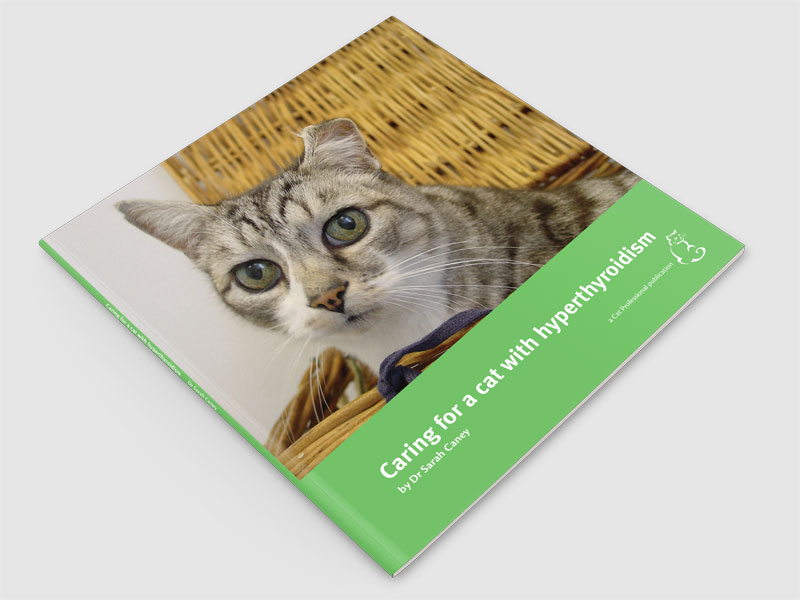
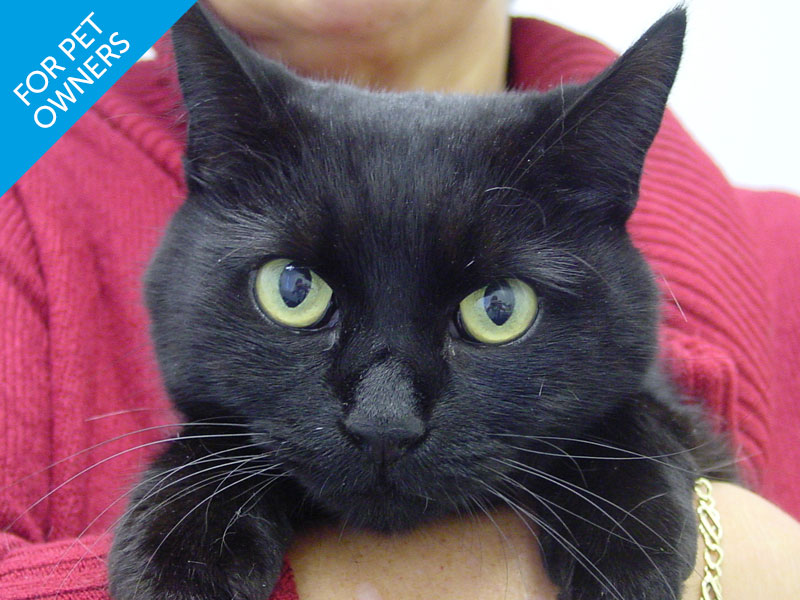
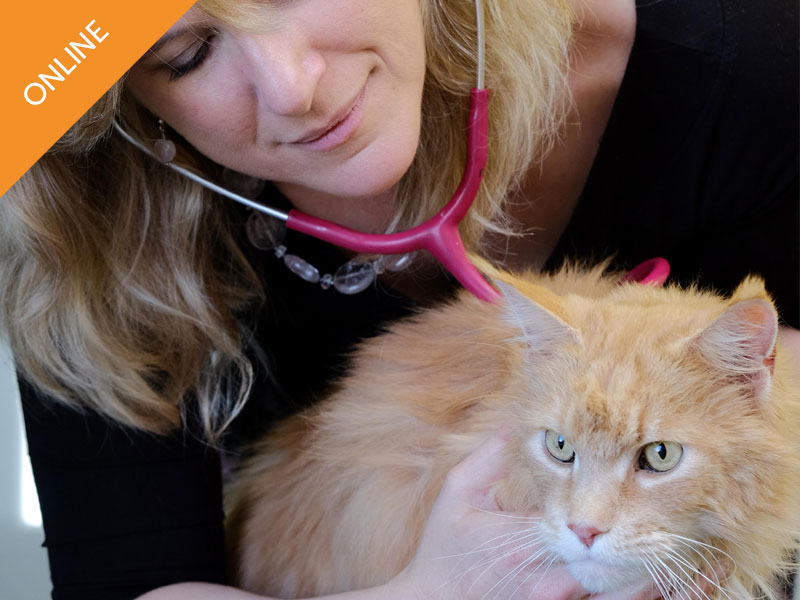
 Telephone referral
Telephone referral
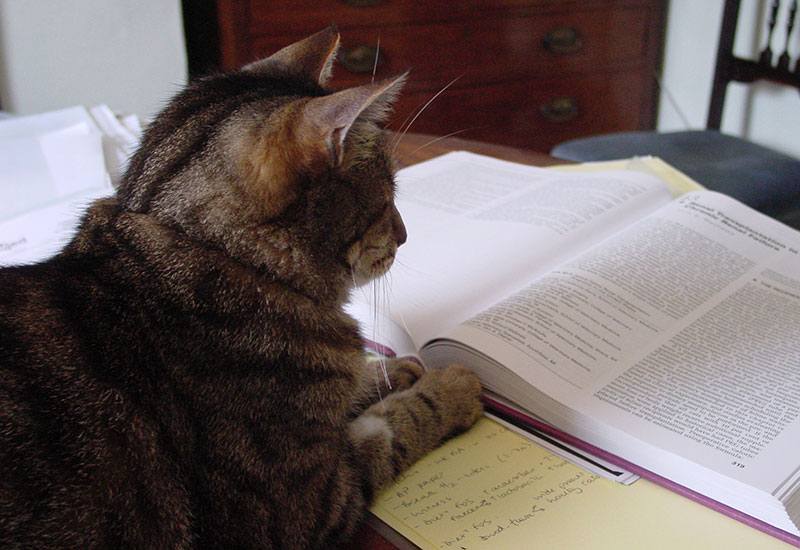 Chronic Kidney Disease (CKD)
Chronic Kidney Disease (CKD)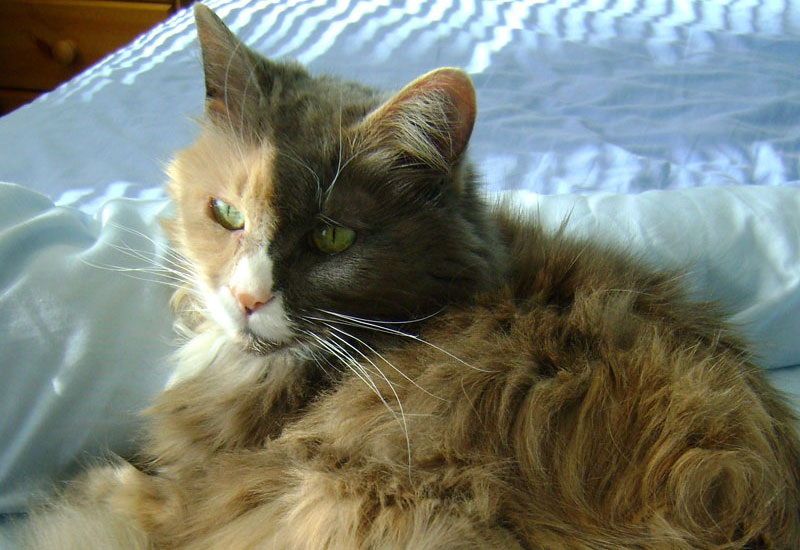 Feline Hyperthyroidism
Feline Hyperthyroidism